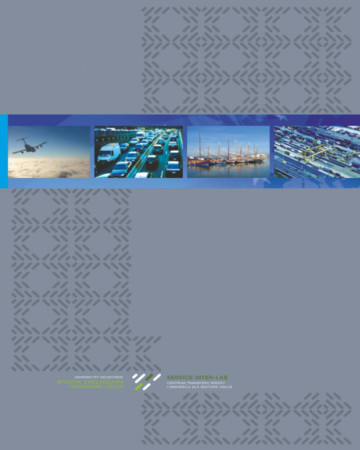
ISSN: 1644-275X
eISSN: 2353-3005
OAI
DOI: 10.18276/ptl.2018.44-10


Issue archive /
nr 4 (44) 2018
ORGANIZACYJNE UWARUNKOWANIA ROZWOJU ELEKTROMOBILNOŚCI W POLSCE NA TLE WYBRANYCH KRAJÓW
(ORGANIZATIONAL CONDITIONS FOR DEVELOPMENT OF ELECTROMOBILITY IN POLAND ON SELECTED COUNTRIES)
| Authors: |
Przemysław
Starzyński
Enea Operator Sp. z o. o. |
| Keywords: | electromobility electric car balanced transport charging point |
| Data publikacji całości: | 2018 |
| Page range: | 9 (95-103) |
| Klasyfikacja JEL: | L91 L94 |
Abstract
The text addresses the issue of the development of electromobility in the context of barriers and organizational
benefits. The first part presents legal regulations in the area of electromobility, which were implemented
in Poland. The National framework for alternative fuels infrastructure policy, the act on electromobility
and alternative fuels and the act on biocomponents and liquid biofuels have been defined
and characterized. The next part identifies the most important organizational changes that minimize the
barriers to the implementation of electromobility. There are also examples of the distribution of charging
infrastructure for electric cars and the direction of electromobility development in the USA, Japan, Great
Britain, Norway and the Netherlands. The whole was completed with a concise summary.
Download file
Article file
Bibliography
| 1. | BMVI (2009). German Federal Government’s National Electromobility Development Plan. Pobrano z: https://www.bmvi.de/blaetterkatalog/catalogs/219118/pdf/complete.pdf (10.09.2018). |
| 2. | BP Energy Outlook (2017). Pobrano z: https://www.bp.com/content/dam/bp/pdf/energy-economics/energy-outlook-2017/bp-energy-outlook-2017.pdf (10.09.2018). |
| 3. | Drożdż, W. (2018). Idea Smart City. W: W. Drożdż (red.), Elektromobilność w rozwoju miast (s. 117–140). Warszawa: Wydawnictwo Naukowe PWN. |
| 4. | Energetyka (2017). Kolejna stacja ładowania aut elektrycznych od firmy Greenway. Pobrano z: https://energetyka.wnp.pl/kolejna-stacja-ladowania-aut-elektrycznych-od-firmy-greenway,309214_1_0_0.html (19.09.2018). |
| 5. | European Council on Foreign Relations (2009). What Does Russia Think?. Pobrano z: https://www.ecfr.eu/page/-/ECFR16_What_Does_Russia_Think.pdf (12.09.2018). |
| 6. | Hydrogenfuelnews (2016). Japanese Government is Expanding the Country’s Hydrogen Infrastructure. Pobrano z: http://www.hydrogenfuelnews.com/japan-build-320-hydrogen-fuel-stations-2025/8528003/ (18.09.2018). |
| 7. | IEA (2017). Global EV Outlook 2017: Two Million and Counting. Pobrano z: https://www.iea.org/publications/freepublications/publication/GlobalEVOutlook2017.pdf (10.09.2018). |
| 8. | Krajowe ramy (2017). Krajowe ramy polityki rozwoju infrastruktury paliw alternatywnych. Pobrano z: http://bip.me.gov.pl/node/26450 (23.09.2018). |
| 9. | Leginfo (2014). Vehicle Retirement and Replacement: Charge Ahead California Initiative. Pobrano z http://leginfo.legislature.ca.gov/faces/billNavClient.xhtml?bill_id=201320140SB1275&search_keywords (10.09.2018). |
| 10. | Newsroom (2017). Worldwide Sales of Toyota Hybrids Surpass 10 Million Units. Pobrano z: https://newsroom.toyota.co.jp/en/detail/14940871 (18.09.2018). |
| 11. | Plan rozwoju (2017). Plan Rozwoju Elektromobilności w Polsce. Pobrano z http://bip.me.gov.pl/node/26453 (23.09.2018). |
| 12. | Rystad 1 (2017). All-Time Low for Discovered Resources in 2017: Around 7 Billion Barrels of Oil Equivalent Was Discovered. Pobrano z https://www.rystadenergy.com/newsevents/news/press-releases/all-time-low-discovered-resources-2017 (3.09.2018). |
| 13. | Rystad 2 (2018). Electric Vehicle Sales and Oil Demand Destruction in Norway. Pobrano z: https://www.rystadenergy.com/newsevents/news/press-releases/fs-elcetric-vehicle-oil-demand/ (14.09.2018). |
| 14. | Spotlightmetal (2018). Analysis of Electromobility in Six Countries – Where to Invest Next. Pobrano z: https://www.spotlightmetal.com/analysis-of-electromobility-in-six-countries-where-to-invest-next-a-718387/ (15.08.2018). |
| 15. | Statista (2018). Electric Car Sales Are Surging in China. Pobrano z: https://www.statista.com/chart/14098/electric-car-salesare-surging-in-china/ (11.09.2018). |
| 16. | Strategia rozwoju (1999). Strategia zrównoważonego rozwoju Polski do roku 2025. Pobrano z: http://snep.edu.pl/sms/materialy/strategia%20zrownowazonego%20rozwoju%20polski%20do%20roku%202025.pdf (25.09.2018). |
| 17. | The Guardian (2018). Ban New Petrol and Diesel Cars in 2030, Not 2040, Says Thinktank. Pobrano z: https://www.theguardian.com/environment/2018/mar/18/uk-should-bring-2040-petrol-and-diesel-car-ban-forward-2030-green-alliance (14.09.2018). |
| 18. | Ustawa o biokomponentach (2018). Ustawa z dnia 6 czerwca 2018 r. o zmianie ustawy o biokomponentach i biopaliwach ciekłych oraz niektórych innych ustaw, Dz.U. 2018, poz. 1356. Pobrano z: http://prawo.sejm.gov.pl/isap.nsf/download.xsp/WDU20180001356/T/D20181356L.pdf (23.09.2018). |
| 19. | Ustawa o elektromobilności (2018). Ustawa z dnia 11 stycznia 2018 r. o elektromobilności i paliwach alternatywnych, Dz.U. 2018, poz. 317. Pobrane z: http://prawo.sejm.gov.pl/isap.nsf/download.xsp/WDU20180000317/T/D20180317L.pdf (23.09.2018) |
| 20. | Zap (2018). Charging Point Statistics 2018. Pobrano z: https://www.zap-map.com/statistics/ (26.09.2018). |